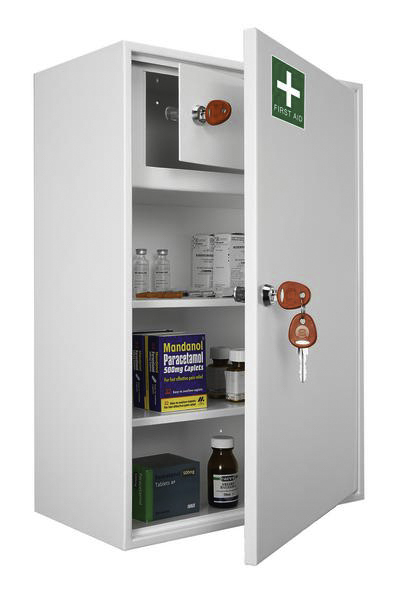The Comprehensive Guide to Medical Cabinets
August 5, 2023
In the fast-paced and high-stakes world of healthcare, the importance of efficient storage solutions cannot be overstated. Medical cabinets and lockers play a vital role in maintaining a well-organized, secure, and sterile environment in medical facilities. This comprehensive guide will delve into the world of medical cabinets and lockers, exploring their significance, types, features, and essential considerations for choosing the right ones.

The Significance of Medical Cabinets
Comprehensive Guide to Medical Cabinets. Medical facilities, whether hospitals, clinics, or laboratories, deal with a vast array of sensitive, valuable, and often hazardous materials. From medications and medical supplies to equipment and confidential patient records, proper storage is essential to ensure patient safety, operational efficiency, and regulatory compliance.
Types of Medical Cabinets
- Medication Cabinets: Designed to safely store medications, these cabinets often come with secure locking mechanisms to prevent unauthorized access. Some models even incorporate electronic systems that track access and maintain an audit trail.
- Medical Supply Cabinets: These cabinets are tailored for storing various medical supplies like bandages, gloves, and surgical tools. They are organized to allow quick access to items while keeping them sterile.
- Controlled Substance Cabinets: For medications with high abuse potential, controlled substance cabinets offer an extra layer of security, meeting strict regulatory requirements and preventing unauthorized access.
- Emergency Crash Carts: These mobile cabinets store essential medical supplies and equipment for immediate response during emergencies. Quick access and organization are critical to their design.
- Personal Effects Lockers: Medical staff often need secure storage for personal belongings while on duty. These lockers ensure staff have a safe place to store their items.
Features and Considerations
- kers saves time and reduces the risk of contamination. Adjustable shelves, clear labeling, and easy-to-clean interiors contribute to improved accessibility.
- Compliance: MedSecurity: Security is paramount in medical storage. Look for cabinets and lockers with robust locking mechanisms such as electronic keypad locks or biometric access. Adequate security ensures only authorized personnel can access critical materials.
- Material and Durability: Medical storage solutions should be constructed from materials that are resistant to corrosion, chemicals, and wear. Stainless steel is a popular choice due to its durability and ease of cleaning.
- Organization and Accessibility: Efficient organization within cabinets and locical facilities must adhere to strict regulations regarding storage and security of medications and supplies. Choose cabinets that comply with industry standards such as HIPAA (Health Insurance Portability and Accountability Act) and DEA (Drug Enforcement Administration) requirements.
- Sterility and Infection Control: Medical storage solutions must support infection control efforts. Cabinets with seamless surfaces and antimicrobial coatings can help prevent the growth of harmful microorganisms.
- Customization: Medical storage needs can vary greatly based on the facility’s specialization. Cabinets that can be customized to accommodate specific equipment and supplies ensure an optimal fit.
Benefits of Medical Cabinets
- Patient Safety: Proper storage prevents cross-contamination and ensures that medications and supplies remain sterile, reducing the risk of infections and complications.
- Efficiency: Well-organized cabinets and lockers streamline workflows. Medical staff can quickly locate and retrieve necessary items, saving time in critical situations.
- Regulatory Compliance: Medical facilities must adhere to strict regulations. Using compliant storage solutions helps avoid penalties and legal issues.
- Reduced Wastage: With proper storage, medical supplies and medications are less likely to expire due to exposure or mishandling, leading to cost savings.
- Confidentiality: Cabinets with secure locks protect patient records and sensitive information, maintaining patient confidentiality.
Maintenance and Care
Regular maintenance ensures the longevity and effectiveness of medical cabinets and lockers. Cleaning them according to recommended procedures and promptly addressing any mechanical issues is crucial.
Conclusion
In the complex world of healthcare, medical cabinets and lockers are unsung heroes, contributing to patient safety, regulatory compliance, and operational efficiency. With various types catering to different storage needs and a multitude of features ensuring security and sterility, these storage solutions have become indispensable in modern medical facilities. By understanding the significance, types, features, and considerations associated with medical cabinets and lockers, healthcare organizations can make informed decisions that enhance patient care and streamline daily operations.